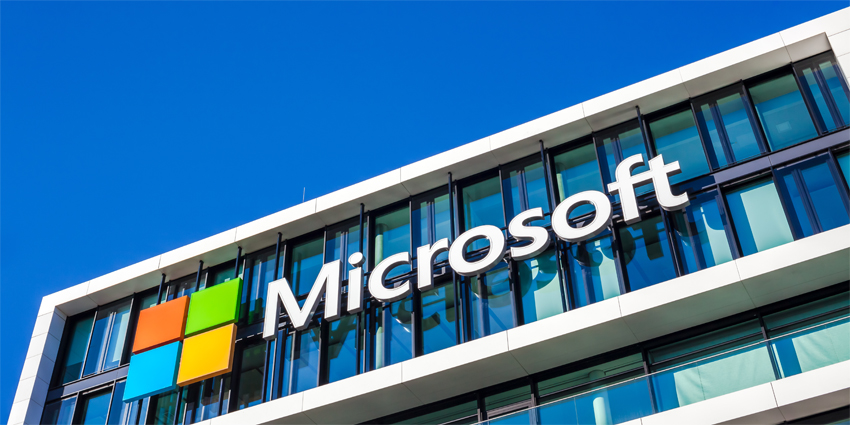Converging UCaaS and CCaaS platforms became one of 2022’s biggest CX trends.
Expect this to continue in 2023, with many contact centers considering how to best connect their contact center with Microsoft Teams.
Why Teams? Because many businesses have already deployed the solution, with Microsoft leading the UCaaS market.
Moreover, there are many other benefits to making the move, as our panellists will explore. This month, they include:
- Simon Adnett, VP of Sales UK, Ireland & MEA at Enghouse Interactive
- Andy Rawll, Senior Manager of Product Marketing at 8×8
- Marco Cortese, President and Sales Director of Mida Solutions
- Artur Nowakowski, CTO at ContactCenter4ALL
Read on to gain each expert’s perspective on how a Microsoft Teams integration combats conventional contact center challenges and future-proofs the operation.
What Problems Will a Teams Integration Help Contact Centers Overcome?
Adnett: As a UCaaS platform, Teams acts as digital glue to bring together all elements of the contact center while unifying it with the broader business.
On an operational level, Teams breaks down barriers within the contact center by enabling better communication and collaboration.
How? By connecting disparate teams and removing silos, allowing people to work from anywhere, whether that’s at home or across various time zones.
These benefits translate to reduced costs, increased productivity, and greater employee retention through a better working experience.
On the customer side, Teams empowers agents with immediate access to information and the tools they need to do their jobs, such as workplace chat, video meetings, and shared document storage.
Also, it allows them to collaborate with back office experts, while supervisors have greater operational visibility.
As a result, customers receive better service across all channels, which is conducive to higher satisfaction and first contact resolution and rates.
Rawll: A contact center solution that integrates with Microsoft Teams has many benefits. It provides cohesion between a customer’s preferred CRM system and the workflows that power end-customer interactions and fuel positive customer sentiment.
Moreover, it allows hybrid working and collaboration to extend from Teams into the contact center. This acts as a catalyst for improved productivity, playing a critical role in reducing employee churn and improving staff retention.
Furthermore, Teams-enabled contact centers reveal insightful performance and adherence metrics. These facilitate internal operational efficiency and ensure compelling experiences for end-customers, driving impactful and measurable business outcomes.
Finally, a single communications platform with PSTN calling for Teams helps consolidate services under a single vendor and reduces administrative overheads.
Beyond that, it can empower Teams as a user’s standard dial interface for both CC and UC, simplifying onboarding, accelerating adoption, and eliminating the need for custom add-ons.
Cortese: A CCaaS integration adds to Microsoft Teams all the advanced call management features that agents use in a traditional environment.
As a result, everything they need to handle requests integrates into a unique cloud-based ecosystem, paving the way for hybrid work.
Indeed, agents can work from anywhere, enjoying a familiar, cohesive user experience.
Such an approach saves agents time when switching between applications. Instead, they have more information at their fingertips, streamlining their daily activities and allowing them to focus their attention on customer requests.
Furthermore, to enhance service quality, companies can analyze additional UC data. Combining this with Power BI allows contact centers to harness insights from across the organization and apply these to improve customer journeys.
Nowakowski: Using Microsoft Teams as an end-to-end communications platform provides businesses with an opportunity to fully remove legacy phone systems.
These decades-old PBX systems, creeping towards end of service life, are expensive to maintain and often bring security, support, and integration challenges.
Yet, where legacy telephony systems lack adaptability, a highly flexible, license-based model, like Teams, allows contact centers to scale up or down seamlessly. Such a system is ideal for organizations that experience seasonal surges in demand or are undergoing rapid business growth.
Moving to Teams also benefits businesses by shifting the administrative burden, such as updates, patching, and maintenance, away from in-house IT departments and over to the service provider. As such, the business enjoys greater cost control via the easy addition or removal of add-ons.
And, of course, Microsoft Teams offers next-generation cybersecurity, which is vital during these times of increased cyberattacks and highly damaging ransomware.
How Will a Microsoft Teams Integration Help Future-Proof the Contact Center?
Adnett: Microsoft Teams provides a platform for future innovation. Yes, it offers a unified, omnichannel communication and collaboration solution, but the contact center can also develop and evolve how it uses the platform.
By working with the right partner, operations can easily customize and add new modules as and when they like.
Also, because Teams links seamlessly to the broader Microsoft technology stack, contact centers can harness the company’s leading-edge innovations around the cloud, AI, and automation.
For example, companies can innovate in several ways by tapping into Microsoft Azure Cognitive Services – such as speech-to-text, translation, and sentiment analysis.
Indeed, they can analyze calls live and provide agents with data and knowledge in real-time that is pertinent to the customer’s query.
Alternatively, a contact center may extend its capabilities and translate interactions in real-time, allowing conversations where agents and customers don’t share a common language.
Using Azure Bot Services enables the company to create AI-powered chatbots integrated with its contact center infrastructure.
Rawll: Most notably, it supports a cloud-first solution strategy – optimized for hybrid working, flexible staffing models, and more.
Indeed, as part of the broadly-adopted Microsoft 365 business collaboration suite, Teams has become the predominant cloud-based communications solution.
Moreover, it enables customers to consolidate their legacy communications platforms and investments into a single system while reducing management overhead.
Finally, it embeds a CX solution into the organization that can flex, scale, and adapt to market needs.
Cortese: A contact center integrated with Microsoft Teams supports multi-channel service. After all, a proper integration will empower agents to seamlessly interact with customers by handling chats, emails, and calls.
Moreover, it will support AI adoption, with the CCaaS industry just beginning to touch the service of its potential in improving service and reducing cost.
Already, it is helping automate activities, such as responses to everyday issues, decreasing the burden on agents, who can consequently give greater attention to complex requests.
Such an approach paves the way for increasing satisfaction as customers can obtain quicker replies to simple, transactional questions.
Nowakowski: Combining Microsoft Teams with enterprise-grade contact center solutions unlocks omnichannel capabilities and functionalities not available in the standard version of Teams.
For instance, businesses may implement intelligent skills-based routing, supervisor settings, and call recording – moving beyond the scope of traditional telephony systems at a significantly lower price.
In addition, as the channel mix continues to swell, from live chat to WhatsApp, flexible routing that directs queries based on specific events becomes increasingly paramount. A Teams integration allows contact centers to stand out from less flexible competitors.
Moreover, it puts contact center leaders in a better position for the future when they may wish to adopt additional capabilities, such as real-time analytics and conversational AI.
What Should Contact Centers Look for In a Partner for Their Teams Integration?
Adnett: The IT department may have successfully implemented Teams across the rest of the organization. However, the contact center brings unique challenges.
As such, businesses must work with a specific partner focused on Teams in the contact center.
Select one with the right experience, a robust and long-term relationship with Microsoft, and an accredited, comprehensive technology portfolio.
Start by asking for examples of where it has previously delivered Teams in the contact center. Look for experience with a range of communication and PBX solutions.
After, check it has a flexible deployment architecture that meets operational and security requirements and that the vendor can provide tailored training.

Also, remember that Teams doesn’t cover everything a modern contact center needs. After all, it is not a CCaaS platform.
So, choose a partner with a complete portfolio of solutions – such as call recording and analytics – that work seamlessly with Teams. Doing so will fill gaps in the contact center’s infrastructure.
Rawll: Start by researching how industry experts rate your potential partner against their peers. For example, Gartner Magic Quadrant reports are longstanding and trusted sources on the leaders and emerging players.
Secondly, validating the type of Teams integration a vendor offers – by identifying whether they have Microsoft solution certification – is vital.
Equally, if the contact center relies on a particular third-party CRM solution, such as Salesforce, check that the vendor has proven interoperability.

Also, find out whether the partner supports emerging channels, such as chat and social. Corresponding analytics to optimize these omnichannel use cases is another excellent capability.
Lastly, it’s prudent to ensure that the provided PSTN calling options offer broad geographic reach, financially-backed SLAs, and generous unmetered calling plans.
Cortese: Companies now search for a Microsoft partner that is strong enough on both the business and technology side.
Our experience of over 18 years highlights our high competence in providing cutting-edge contact center solutions and meeting market needs. These are the core aspects of what contact centers look for in a partner.

Many managers also wish to integrate advanced conversation features with their CRM software and BI systems. They seek to invest in a contact center that easily integrates with the existing business processes and frees up more data.
Finally, operations look for a partner who understands their willingness to use Teams as a means of spreading customer information across different departments.
Nowakowski: When selecting a contact center software vendor, the capability of their portfolio is just one consideration. The strength of vendor expertise is equally critical.
Ideally, this will cover everything from local presence and market knowledge to post-deployment support and solution development.

Moreover, contact centers should look for partners certified within the Microsoft Contact Center Certification Program. This ensures each provider’s solution meets the quality, compatibility, and reliability Microsoft expects from its associated solutions.
Even better, they should look for vendors that integrate with the latest Microsoft Teams “Extend” model. This certifies that solutions providers can provide contact centers with the use of Teams far beyond a SIP interface and basic functionalities.
Miss out on the previous CX Today roundtable? Check it out here: Customer Experience Trends 2023 and Emerging Tech







